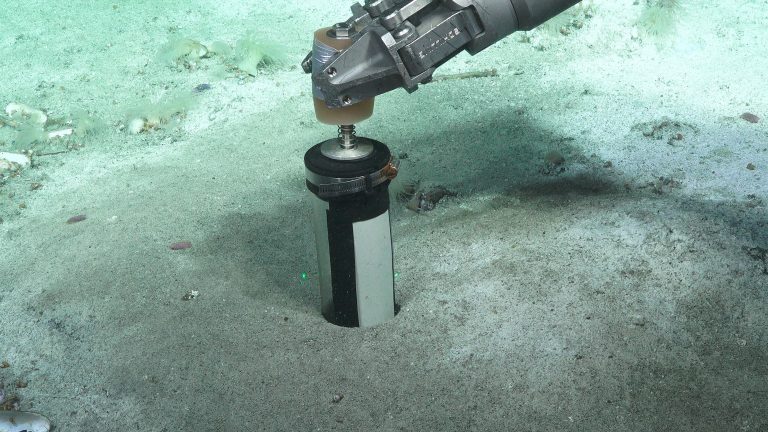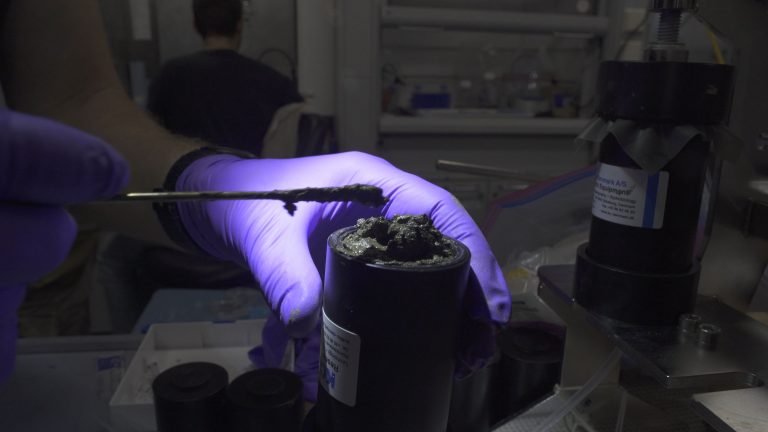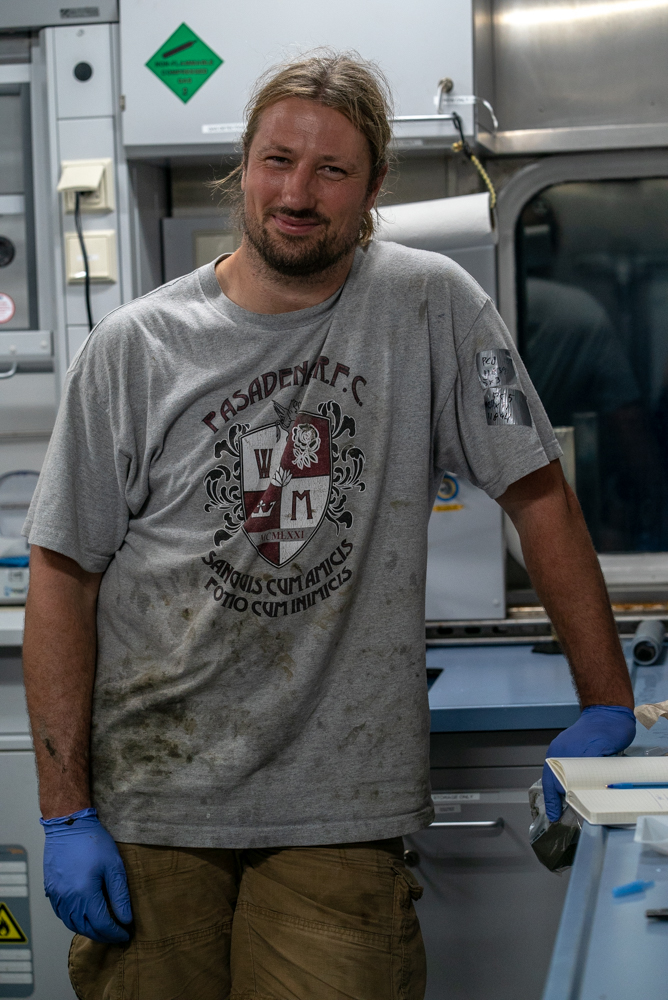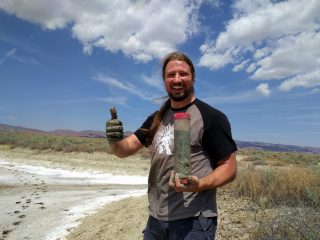There are days you find yourself on a ship, at 2am, covered in mud. Those days you wonder, “How did I get here?” Then you realize what an amazing opportunity you have.
Hydrothermal vents are one of the most exciting areas on the planet for microbiologists, as they are one of the few places where we can channel our inner naturalists. The microbes give life to all the bigger creatures inhabiting the vent field and the presence of microbial mat tells us where to look for vent fluid seeping out of the seafloor. The microbes live near the fluid because it contains their food (electron donors), and they turn the energy stored in the vent fluid chemicals into biomass, forming the basis of the food chain at vents just like plants do on the surface. Some vent creatures – like the tubeworms and clams at Pescadero – find themselves a shortcut in the food chain and rather than eating microbes, they “grow” their own, hosting symbionts living in a special organ. So from my perspective, understanding the biology of a vent field starts at the microbes.

The trouble is, microbes are not too easy to characterize. You can not grab one single microbe, bring it up, and dissect it to see what it looks like or understand how it works. So what we do is sample the microbes living in (and on) rocks, in the sediment, and in symbiosis with the animals. That means that when ROV Subastian comes up after 12 hours of diving, our work really starts.
We pluck any obvious macro-biology off the rocks and hand it over to the zoologists on board, who will image and characterize them. Then some parts are collected for mineral analysis, to see whether there is evidence of biotic or abiotic formation. Finally, we put small pieces in the ultra-cold freezer (-80 ‘C) to preserve them for community analysis by DNA sequencing. Sometimes pieces of rock are also preserved for microscopy, so we can try to find cells that grow on the rock later.

If we are lucky, the sediment cores come to the surface undisturbed, and we will be able to capture the gradients starting at the seafloor and going down into the mud. Gradients like these form because microbes use up the resources in the water, and because there is mixing with fluid coming up from below. Along these gradients many different species can find a place to live: we like to figure out who is where, and why.
So what we do is take a core, stick disk that looks a bit like a hockey in the bottom and push the sediment up. We then slice off 1cm or 3 cm pieces and prepare these for 10 different analyses. As you can imagine, this takes a while, and can get a little messy and terribly smelly (of rotten eggs and gasoline yesterday) so we have to do it outside. And that is why you can find me out on the aft deck at 2am, covered in mud, with a broad grin on my face.


